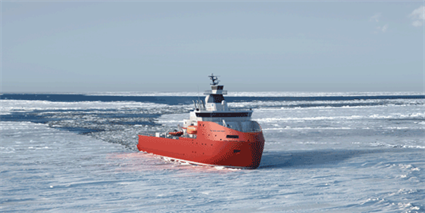U.S. Coast Guard Sector Sault Ste Marie commenced Operation Taconite, an icebreaking mission launched in response to expanded ice growth in the commercial ports of western Lake Superior, Green Bay and the lower St. Marys River.
Before ice impeded commercial navigation, several icebreakers were assigned to each region. Recently, Coast Guard Cutter Mackinaw was dispatched to assist two vessels into the Port of Green Bay. Coast Guard Cutter Alder was assigned to manage the ice breaking needs of western Lake Superior, specifically the twin ports of Duluth, Minn., and Superior, Wisc. Coast Guard Cutters Mobile Bay and Katmai Bay were assigned to the St. Marys River.
As ice growth expands on the Great Lakes in the coming days, additional ice breakers will join the operation. Operation Taconite is the Coast Guard’s largest domestic icebreaking operation. The operation encompasses Lake Superior, the St. Marys River, the Straits of Mackinac, Georgian Bay, and all of Lake Michigan.
As part of Operation Taconite’s commencement, the process of closing the Pipe Island and West Neebish Channels in the St Marys River has begun, with an effective closure time of 1 p.m. Saturday. In the coming weeks, additional waterways may close after due consideration is given to the protection of the marine environment, the need for cross-channel traffic, and the safety of the island residents; who in the course of their daily business use naturally-formed ice bridges for transportation to and from the mainland.
The implementation of Operation Taconite places additional movement criteria on commercial ships plying the Western Lakes, St. Marys River, and the Straits of Mackinac. These measures include restricting tanker transits to daylight in the presence of ice, reducing speeds by 2 miles per hour in specified locations to reduce incidental ice breaking, and requiring additional voice and position reporting points throughout the operation’s area of responsibility.































































